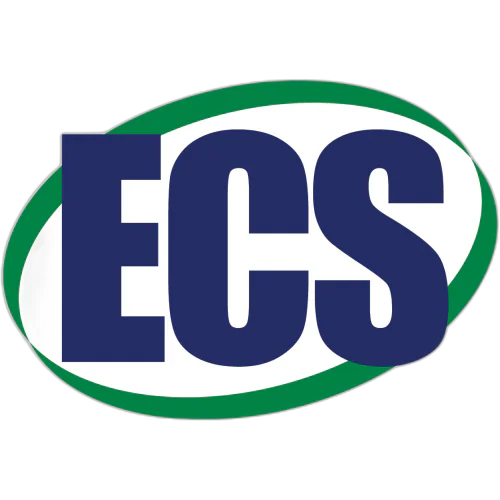Diffusion Limited Current Density: A Watershed in Electrodeposition of Lithium Metal Anode
Xieyu Xu
1
,
Xingxing Jiao
2, 3
,
Olesya O. Kapitanova
1, 2, 3
,
Jialin Wang
4
,
Valentyn S. Volkov
2
,
Yangyang Liu
2, 3
,
Shizhao Xiong
5
3
Autonomous Noncommercial Organization “ID&AS: Inter‐Disciplinary & Advanced Studies Center” Moscow 127495 Russia
|
Publication type: Journal Article
Publication date: 2022-04-07
scimago Q1
wos Q1
SJR: 8.378
CiteScore: 40.7
Impact factor: 26.0
ISSN: 16146832, 16146840
General Materials Science
Renewable Energy, Sustainability and the Environment
Abstract
Lithium metal is considered to be a promising anode material for high‐energy‐density rechargeable batteries because of its high theoretical capacity and low reduction potential. Nevertheless, the practical application of Li anodes is challenged by poor cyclic performance and potential safety hazards, which are attributed to non‐uniform electrodeposition of Li metal during charging. Herein, diffusion limited current density (DLCD), one of the critical fundamental parameters that govern the electrochemical reaction process, is investigated as the threshold of current density for electrodeposition of Li. The visualization of the concentration field and distribution of Faradic current density reveal how uniform electrodeposition of Li metal anodes can be obtained when the applied current density is below the DLCD of the related electrochemical system. Moreover, the electrodeposition of Li metal within broken solid electrolyte interphases preferentially occurs at the crack spots that are caused by the non‐uniform electrodeposition of Li metal. This post‐electrodeposition leads to more consumption of active Li when the applied current density is greater than the DLCD. Therefore, lowering the applied current density or increasing the DLCD are proposed as directions for developing advanced strategies to realize uniform electrodeposition of Li metal and stable interfaces, aiming to accelerate the practical application of state‐of‐the‐art Li metal batteries.
Found
Nothing found, try to update filter.
Found
Nothing found, try to update filter.
Top-30
Journals
|
1
2
3
4
5
|
|
|
Advanced Materials
5 publications, 6.76%
|
|
|
Journal of Energy Chemistry
4 publications, 5.41%
|
|
|
ACS applied materials & interfaces
4 publications, 5.41%
|
|
|
Angewandte Chemie - International Edition
4 publications, 5.41%
|
|
|
Angewandte Chemie
4 publications, 5.41%
|
|
|
Journal of Power Sources
4 publications, 5.41%
|
|
|
ACS Applied Energy Materials
3 publications, 4.05%
|
|
|
Chemical Engineering Journal
3 publications, 4.05%
|
|
|
ACS Energy Letters
3 publications, 4.05%
|
|
|
Advanced Functional Materials
3 publications, 4.05%
|
|
|
Advanced Energy Materials
2 publications, 2.7%
|
|
|
Journal of Materials Chemistry A
2 publications, 2.7%
|
|
|
Journal of Energy Storage
2 publications, 2.7%
|
|
|
Nano-Micro Letters
2 publications, 2.7%
|
|
|
Small
2 publications, 2.7%
|
|
|
Functional Materials Letters
1 publication, 1.35%
|
|
|
Inorganics
1 publication, 1.35%
|
|
|
Frontiers of Chemical Science and Engineering
1 publication, 1.35%
|
|
|
Composites Communications
1 publication, 1.35%
|
|
|
Electrochimica Acta
1 publication, 1.35%
|
|
|
Applied Surface Science
1 publication, 1.35%
|
|
|
Interdisciplinary Materials
1 publication, 1.35%
|
|
|
Energy Material Advances
1 publication, 1.35%
|
|
|
Energy Advances
1 publication, 1.35%
|
|
|
Journal of the Electrochemical Society
1 publication, 1.35%
|
|
|
Journal of the European Ceramic Society
1 publication, 1.35%
|
|
|
Advanced Science
1 publication, 1.35%
|
|
|
New Carbon Materials
1 publication, 1.35%
|
|
|
Journal of Solid State Electrochemistry
1 publication, 1.35%
|
|
|
Solid State Ionics
1 publication, 1.35%
|
|
|
1
2
3
4
5
|
Publishers
|
5
10
15
20
25
|
|
|
Wiley
24 publications, 32.43%
|
|
|
Elsevier
22 publications, 29.73%
|
|
|
American Chemical Society (ACS)
13 publications, 17.57%
|
|
|
Royal Society of Chemistry (RSC)
6 publications, 8.11%
|
|
|
Springer Nature
3 publications, 4.05%
|
|
|
World Scientific
1 publication, 1.35%
|
|
|
MDPI
1 publication, 1.35%
|
|
|
Higher Education Press
1 publication, 1.35%
|
|
|
American Association for the Advancement of Science (AAAS)
1 publication, 1.35%
|
|
|
The Electrochemical Society
1 publication, 1.35%
|
|
|
OAE Publishing Inc.
1 publication, 1.35%
|
|
|
5
10
15
20
25
|
- We do not take into account publications without a DOI.
- Statistics recalculated weekly.
Are you a researcher?
Create a profile to get free access to personal recommendations for colleagues and new articles.
Metrics
74
Total citations:
74
Citations from 2024:
36
(48%)
Cite this
GOST |
RIS |
BibTex |
MLA
Cite this
GOST
Copy
Xu X. et al. Diffusion Limited Current Density: A Watershed in Electrodeposition of Lithium Metal Anode // Advanced Energy Materials. 2022. Vol. 12. No. 19. p. 2200244.
GOST all authors (up to 50)
Copy
Xu X., Jiao X., Kapitanova O. O., Wang J., Volkov V. S., Liu Y., Xiong S. Diffusion Limited Current Density: A Watershed in Electrodeposition of Lithium Metal Anode // Advanced Energy Materials. 2022. Vol. 12. No. 19. p. 2200244.
Cite this
RIS
Copy
TY - JOUR
DO - 10.1002/aenm.202200244
UR - https://doi.org/10.1002/aenm.202200244
TI - Diffusion Limited Current Density: A Watershed in Electrodeposition of Lithium Metal Anode
T2 - Advanced Energy Materials
AU - Xu, Xieyu
AU - Jiao, Xingxing
AU - Kapitanova, Olesya O.
AU - Wang, Jialin
AU - Volkov, Valentyn S.
AU - Liu, Yangyang
AU - Xiong, Shizhao
PY - 2022
DA - 2022/04/07
PB - Wiley
SP - 2200244
IS - 19
VL - 12
SN - 1614-6832
SN - 1614-6840
ER -
Cite this
BibTex (up to 50 authors)
Copy
@article{2022_Xu,
author = {Xieyu Xu and Xingxing Jiao and Olesya O. Kapitanova and Jialin Wang and Valentyn S. Volkov and Yangyang Liu and Shizhao Xiong},
title = {Diffusion Limited Current Density: A Watershed in Electrodeposition of Lithium Metal Anode},
journal = {Advanced Energy Materials},
year = {2022},
volume = {12},
publisher = {Wiley},
month = {apr},
url = {https://doi.org/10.1002/aenm.202200244},
number = {19},
pages = {2200244},
doi = {10.1002/aenm.202200244}
}
Cite this
MLA
Copy
Xu, Xieyu, et al. “Diffusion Limited Current Density: A Watershed in Electrodeposition of Lithium Metal Anode.” Advanced Energy Materials, vol. 12, no. 19, Apr. 2022, p. 2200244. https://doi.org/10.1002/aenm.202200244.














